How to Stand Out This Holiday Season
by YesPlz.AINovember 2022

Black Friday/Cyber Monday (BFCM) 2022 is just around the corner.
The clock is ticking–and the success of the BFCM eCommerce 2022 season depends on making strong strategic choices to ensure both long-term and short-term longevity.
We prepared a quick 5-question checklist for your fashion eCommerce to answer as you prepare for the upcoming busy season.
In the YesPlz BFCM Ecommerce 2022 checklist, we include both quick and long term recommendations–because we understand that not every solution can be implemented in a matter of weeks.
But, with a looming recession and fiercely competitive environment, we recommend investing in long-term solutions to help survive the coming year.
Are you looking for AI-powered fashion recommendations, tagging, and search?
Schedule a free 20-minute consultation
The first question you should be able to answer is how shoppers tend to search for products, and how they engage with search.
For example, are they using text search? Utilizing product filters? Image search?
Repeated search attempts using text search can signify that shoppers aren’t receiving accurate search results–and you may need to re-consider your current search system.

And, with the ever-changing language of fashion, text-search alone can lead shoppers to dead-end search results, leaving them dissatisfied and frustrated as they attempt repeated spellings or phrasing of terms.
The answer to “how shoppers search for an item,” will also help your fashion eCommerce in planning long-term search solutions, whether that looks like enhanced text search or AI-powered product filters.
Your shoppers have high expectations for eCommerce search filters in 2022–and dynamic search filters are one of the best ways to make shoppers happy.
Why?
Because the 2022 shoppers has an attention-span of 3 to 5 minutes–and static search filters are too slow, too difficult to use, and not engaging enough to capture their attention.
But, how can you make search filters dynamic without a lot of time and money invested?
There are dynamic search filters, like the YesPlz Style Filter, which is visually-oriented and filters shoppers’ preferred product attributes in real-time.
In addition, other ways to create a dynamic search experience include using AI chatbots to help guide shoppers, and adding a section for user reviews and feedback to overcome any anxieties shoppers may have about the purchase.
Extra Tip: Product recommendations are a great way to enhance product discovery, and can help shoppers continue to add products to their shopping carts while keeping them engaged. But, not all systems are the same. Learn about the difference between them here.
In 2022, personalization during the customer journey is a must-have.
Ecommerce personalization, at its core, means creating uniquely tailored experiences for customers online through recommendations, targeted emails, onsite re-targeting, and more. With more data than ever to collect, fashion eCommerce brands have an advantage compared to previous years.
Data is at the center of eCommerce personalization–and poorly managed data can result in personalization mistakes.
Product recommendations are an effective way to personalize the customer journey.
This BFCM eCommerce season, we recommend you explore personalization tools with built-in data collection, like the YesPlz product recommendation engine, which uses visual search and fashion AI to quickly and accurately identify attributes that matter most to customers, like fit, silhouette and style. Then, the YesPlz system makes accurate recommendations that shoppers love.
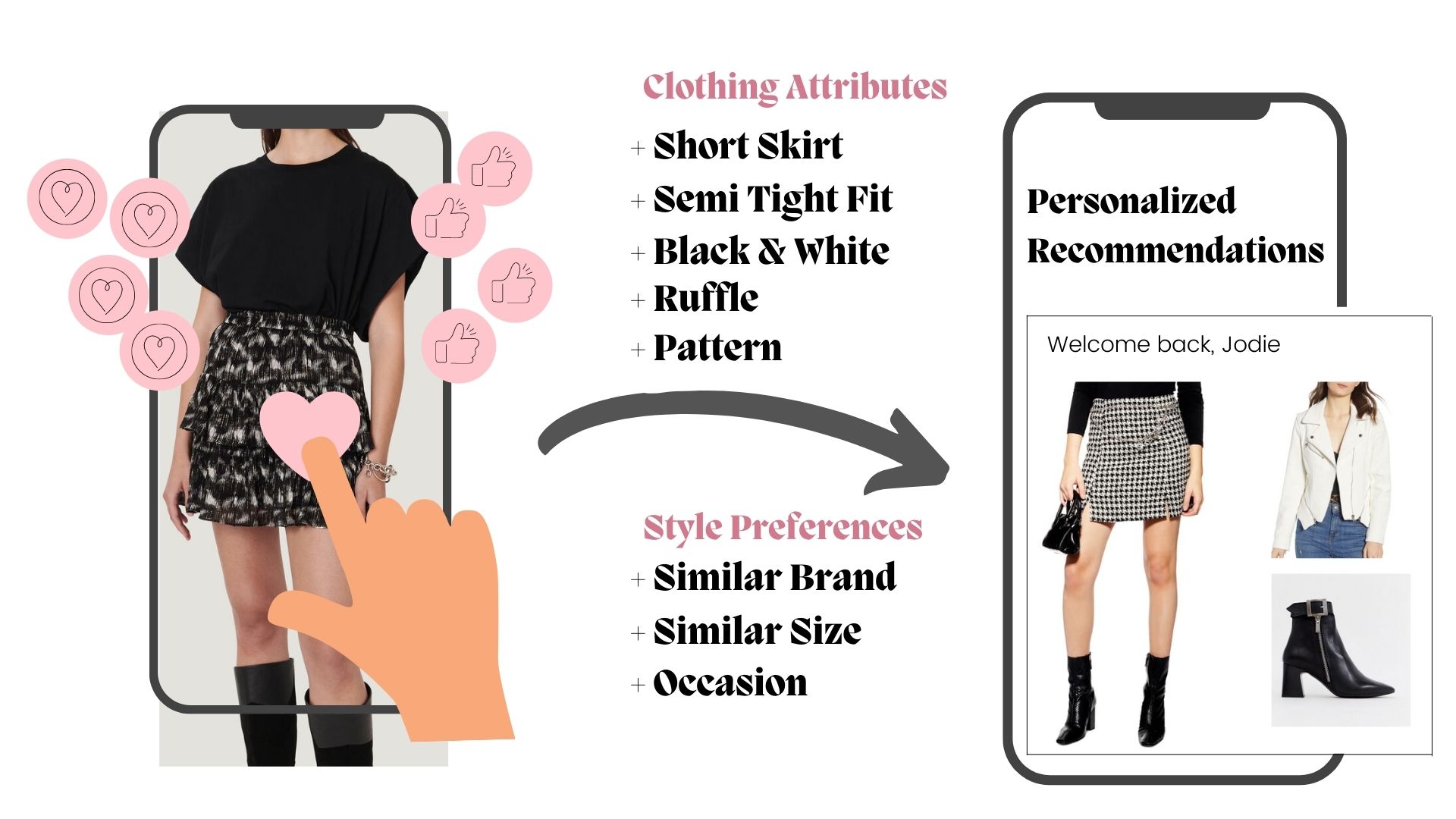
Product recommendations are the key to shopper engagement throughout every step of the purchasing process
BFCM Ecommerce Tip: Include product recommendations on product detail pages, checkout pages, and at strategic purchasing points. By sparking shopper interest during key times when shoppers tend to bounce off, you can be sure that you’re keeping them interested, engaged, and discovering new (relevant) products.
But, not all recommendations are the same.
Quick Product Recommendation Overview
When evaluating the effectiveness of a product recommendation system, it’s crucial that you understand the difference between the types of recommendations, which can affect overall quality. Here’s a quick overview of the two main types of recommendations:
Collaborative filtering: Recommendations based around the choices that a user makes, and then connects those choices to a group of users with similar interests
Pros: Shoppers that are exploring product themes (such as boho vibe dresses) will be grouped with similar users, and be able to explore.
Cons: If the shopper wants specific product attributes (such as a v-neck, short sleeve boho dress), collaborative filtering recommendations can fall short.
There can also be a “cold start problem”: new users don’t have enough information to feed algorithms, so there is a time delay in receiving accurate recommendations. And BFCM eCommerce shoppers have short attention spans–meaning they may not want to wait around to see whether they’ll see relevant products.
Lastly, collaborative filtering can put users in “feedback loops,” where recommendations become an echo chamber of products.

Similar Recommendations: Products recommended share similar attributes (for example, color), and/or product categories. Recommendations aren’t personalized to a specific user, and are product-based.
Pros: Shoppers with specific attribute preferences will see relevant recommendations if the recommendation system can identify why they’re viewing a particular product.
Cons: The similar recommendation system needs to be able to identify the reason why a shopper is viewing a product. For example, a shopper that views a green, casual long-sleeve shirt may be interested in other clothing with a casual vibe, like sweatpants.
However, similar recommendations fall short in recommending other products with a similar vibe, and can feel limiting to shoppers.
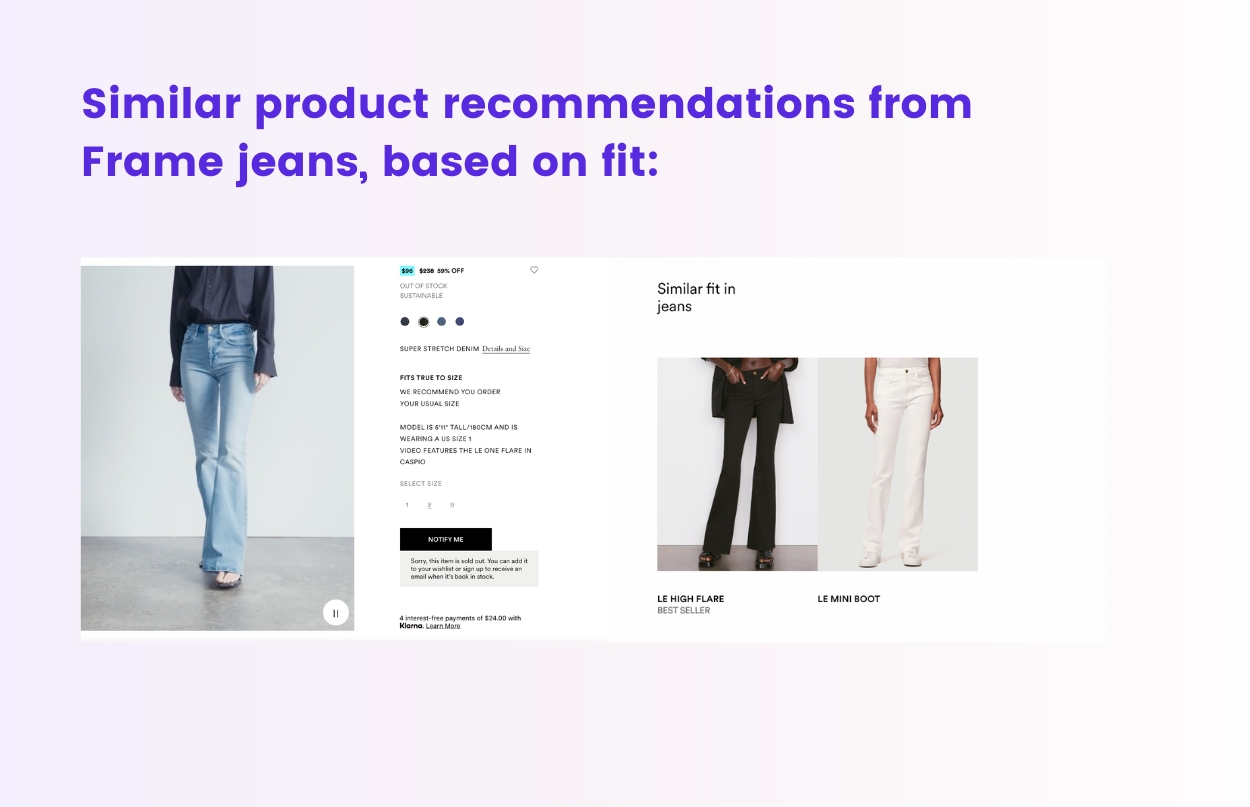
(New!) Unique Double Filtered Recommendations:
Both collaborative and similar recommendations each have their own merits–so why not combine them to create an even more powerful system?
YesPlz created a unique double filtered recommendation system, based on the design styles of products (i.e silhouette, color, print) and then based on vibe (like occasion and fashion style).
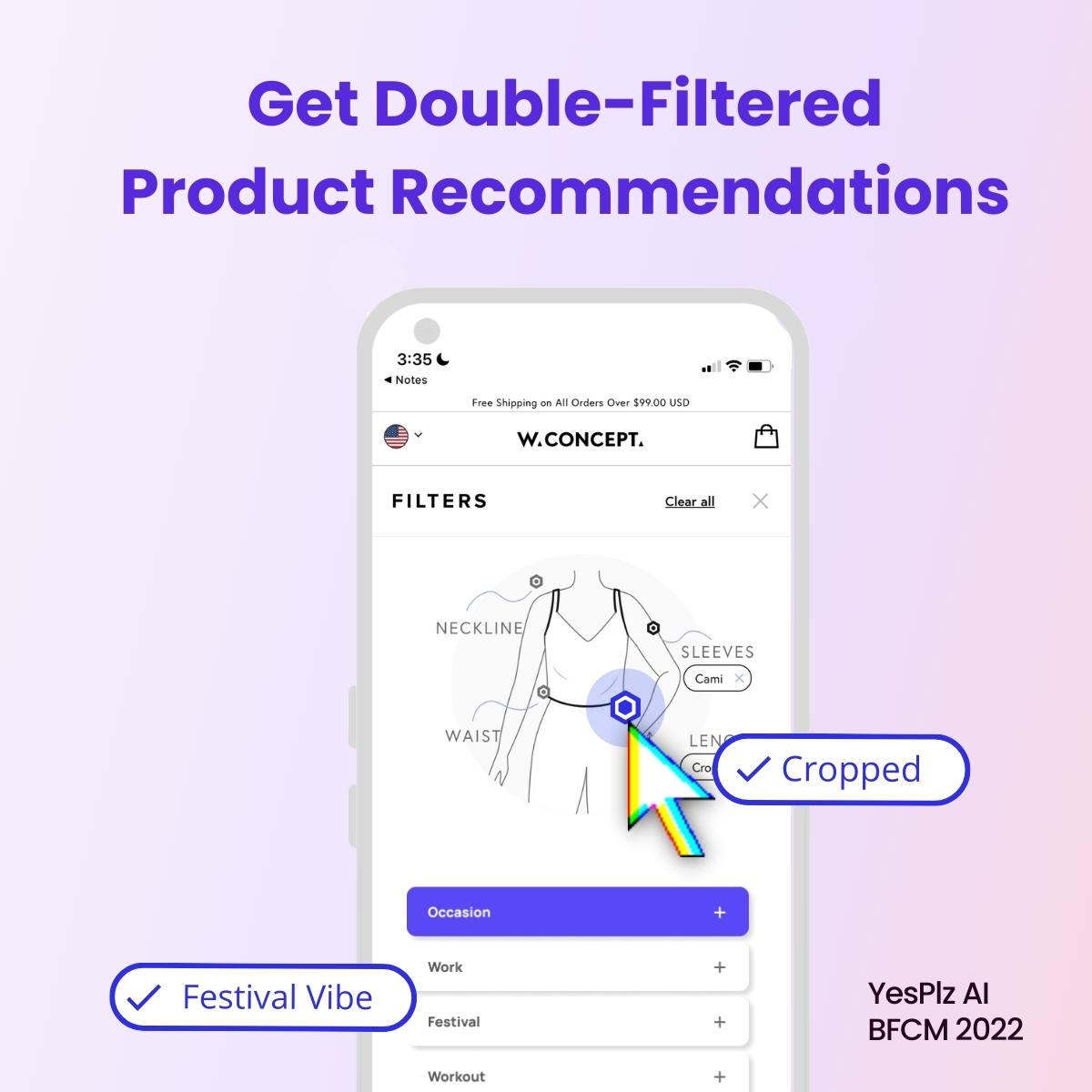
By taking a new approach to product recommendations, YesPlz can create that special “a-ha!” feeling when viewing recommendations–because both design and vibe are taken into consideration.
Schedule a free 20-minute consultation
Put yourself in the shoes of your shoppers–when they land on your page, what do shoppers immediately see? Does this help or hurt the search process?
Depending on the channel that shoppers come from, they may have a limited understanding of your eCommerce–or may be looking for something specific. For example, a shopper that clicks on an Instagram ad for a specific pair of boots will become frustrated if she’s led back to the eCommerce homepage.
Shoppers have different kinds of search intent: exact shoppers know exactly what they want–and just want to complete the purchase. Product-led shoppers are looking for broad product categories, like boots or jackets. Feature-focused shoppers want a product with a specific feature, like a leather jacket or jacket with fringe.
And lastly, thematic shoppers, are looking for products within a specific theme for a special product or occasion (for example, workout clothing or winter hats).

YesPlz Tip: Try using occasion/thematic filters to easily provide shoppers with the themes that matter most to them. YesPlz offers thematic filters using AI fashion tagging–meaning that your product catalog is automatically tagged using AI–and then relevant thematic filters are created.
By understanding shopper search intent, you can make better decisions about types of search, filters, and the overall customer journey (for example, which pieces of content or products to show at certain points).
The language of fashion can be confusing–for example, not all shoppers can easily understand trend words like “shacket”--so how can you make products as easy as possible to understand?
By creating uniform language for products, your eCommerce can stand out this BFCM.
But, how?
We know that incomplete and inconsistent third-party vendor information (and an overwhelming number of products) can make categorizing product attributes difficult. But, through automated product tagging, your eCommerce can use an AI-powered tagging tool, like YesPlz AI, to identify the key product attributes in product images and descriptions, without worrying about manual (and mistake-ridden) entering product data.
And in the short term?
If you don’t have time to implement an automated product tagging system, we recommend to, at least, provide zoomed-in product pictures to give shoppers a better understanding of the product (especially if product descriptions are inconsistent or lacking).
Revenue is what’s on everyone’s minds–and the easiest way to increase revenue is by thinking strategically about your strategy this holiday season. Are shoppers easily finding the products they want? If not, that’s a missed revenue opportunity. Is your eCommerce offering personalization through product recommendations and fashion discovery?
Fashion eCommerce brands that understand investing in strategies like fashion discovery, understanding shopper behavior, and evaluating the effectiveness of product recommendation systems will be the key to sustained success.

Written by YesPlz.AI
We build the next gen visual search & recommendation for online fashion retailers
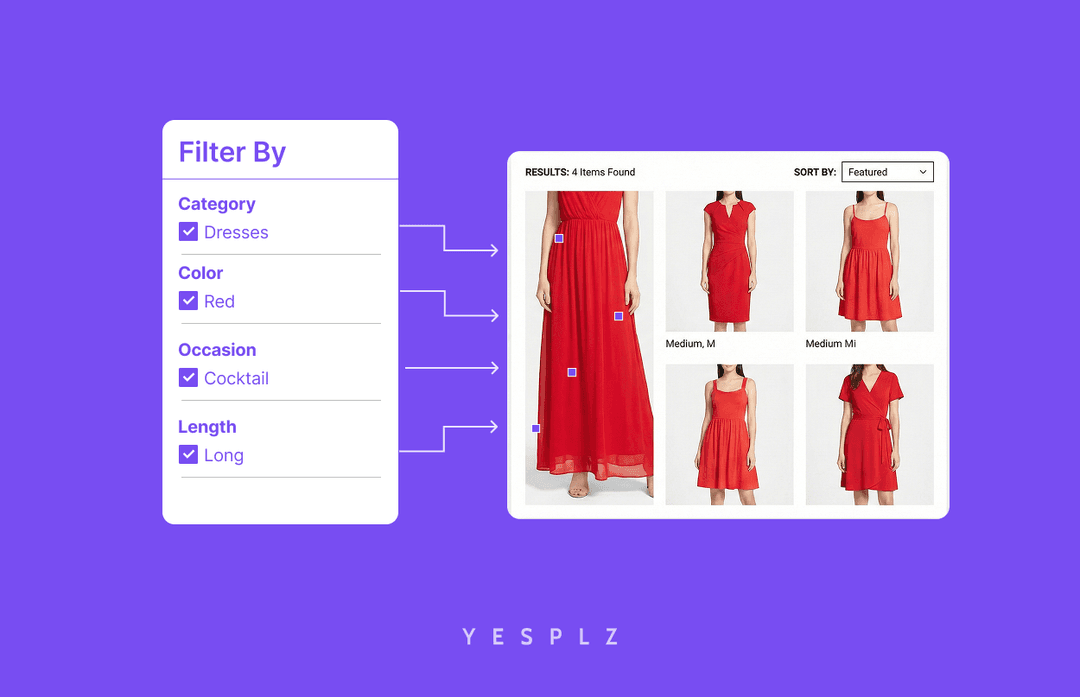
Stop losing sales to poor product filtering. Discover how AI simplifies creating Shopify filters, saving you 25-50 hours per 100 products.
by YesPlz.AI
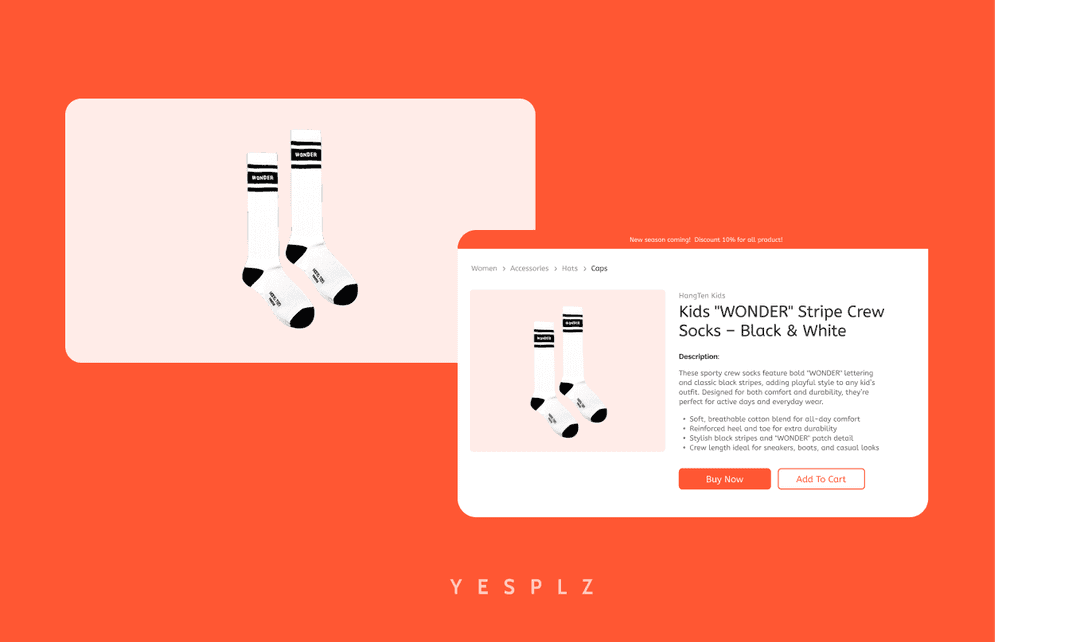
Automate Shopify product pages and cut 50–100 hours of manual work. AI generates product titles, descriptions, and metadata instantly from product images.
by YesPlz.AI